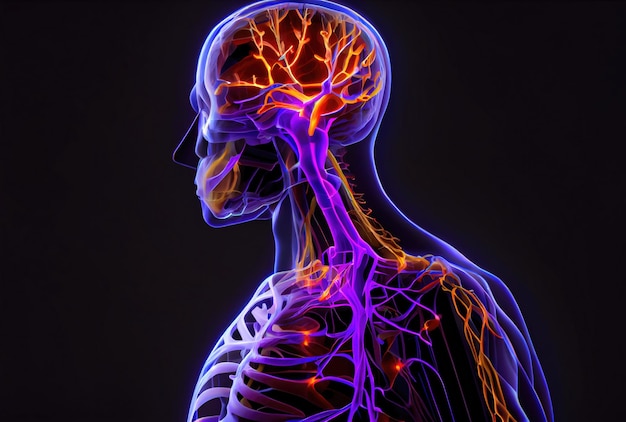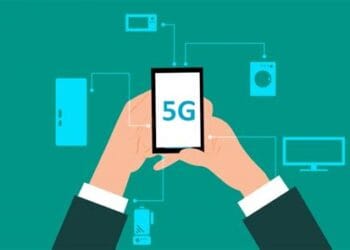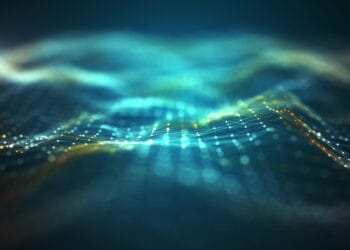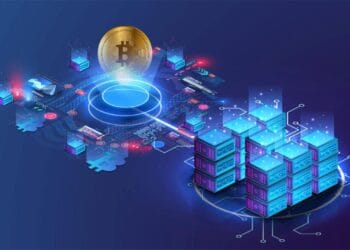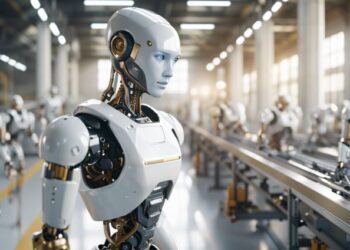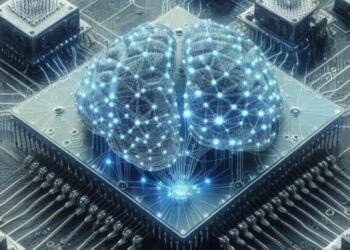All around us, a silent and profound revolution is taking place. It’s not happening in the headlines or in the dramatic pronouncements of world leaders. Instead, it’s unfolding in the microchips embedded in our cities, the fields that grow our food, the machines that power our industries, and even the devices we wear on our wrists. This is the era of advanced sensor networks, a technological “blooming” so pervasive and rapid that it is effectively creating a digital nervous system for our entire planet.
These are not the simple, isolated sensors of the past, like a lone thermostat on a wall. Today’s advanced networks are vast, interconnected webs of sophisticated electronic nerve endings that can see, hear, feel, and even smell the world in ways humans cannot. They are powered by the convergence of miniaturization, ubiquitous connectivity, and artificial intelligence. This trinity of technologies is transforming inert objects into intelligent entities, generating an unprecedented torrent of data that promises to reshape every facet of human existence.
This article explores the anatomy of this global digital nervous system. We will dissect the core technologies that are fueling its explosive growth, examine the real-world applications that are already changing our lives, and confront the monumental challenges and ethical questions that arise when the world itself becomes sentient. The blooming of advanced sensor networks is not merely a technical upgrade; it is an evolutionary leap that is redefining the relationship between the physical and digital realms.
The Anatomy of a Modern Sensor Network
To understand the power of this revolution, one must first appreciate the components that constitute a modern, intelligent sensor network. It’s a symbiotic system where each part plays a critical role in transforming a simple physical measurement into actionable intelligence.
A. The Sensors: The Digital Nerve Endings The foundation of any network is the sensor itself—the device that converts a physical property like temperature, pressure, light, motion, or a chemical signature into an electrical signal. The key driver of the current bloom has been the development of Micro-Electro-Mechanical Systems (MEMS). Using the same photolithographic techniques used to create computer processors, manufacturers can now mass-produce microscopic sensors on silicon wafers.
This has two profound effects:
- Drastic Cost Reduction: A MEMS accelerometer that once cost hundreds of dollars can now be produced for less than a dollar, making it cheap enough to put in every smartphone, vehicle, and piece of industrial machinery.
- Extreme Miniaturization: Sensors are now small and energy-efficient enough to be integrated into virtually anything, from wearable health monitors to “smart dust” that can be scattered to monitor environmental conditions.
The diversity of these sensors is staggering, including optical sensors for imaging, chemical sensors for detecting pollutants, biological sensors for medical diagnostics, and acoustic sensors for predictive maintenance.
B. The Connectivity: The Nerves of the System A sensor in isolation is useless. Its value comes from its ability to transmit its data. The rise of the Internet of Things (IoT) has been powered by a new generation of wireless communication protocols designed specifically for the unique needs of massive sensor deployments. While Wi-Fi and cellular data are familiar, they are often too power-hungry and expensive for a battery-powered sensor that needs to operate for years in a remote field.
Enter Low-Power, Wide-Area Networks (LPWANs). Technologies like LoRaWAN and Narrowband-IoT (NB-IoT) are game-changers, allowing small packets of data to be sent over many kilometers using minimal power. This enables applications like smart water meters that can run for a decade on a single battery. At the other end of the spectrum, the rollout of 5G and the future promise of 6G provide the high-bandwidth, ultra-low-latency connectivity needed for real-time applications like autonomous vehicles and remote robotic surgery, where milliseconds matter.
C. The Processing: The Brain and Reflexes Collecting trillions of data points is one thing; making sense of them is another. This is where processing power comes in, and a crucial architectural shift is underway from a centralized cloud model to a distributed edge model.
- Cloud Computing: For years, the model was to send all sensor data to a powerful, centralized cloud server for storage and analysis. This is excellent for big-data analytics and identifying long-term trends.
- Edge Computing: However, sending everything to the cloud creates latency, consumes bandwidth, and raises privacy concerns. Edge computing moves the processing power closer to the sensor itself. A smart security camera with edge AI can analyze video locally to identify a human intruder and send an alert, rather than streaming endless hours of empty footage to the cloud. This provides an immediate, reflex-like response, crucial for autonomous systems.
Advanced sensor networks use a hybrid approach, with edge devices handling real-time tasks and filtering data, while the cloud performs heavy-duty, long-term analysis.
D. The Intelligence: The Conscious Mind The final, and most transformative, layer is intelligence, provided by Artificial Intelligence (AI) and Machine Learning (ML). AI algorithms are the “mind” of the network, capable of learning from the torrent of sensor data to perform tasks that would be impossible for humans.
- Pattern Recognition: AI can identify subtle patterns that signal an impending equipment failure in a factory or the early onset of a disease from wearable sensor data.
- Predictive Analytics: By analyzing historical data, ML models can predict future outcomes, such as forecasting traffic congestion in a city or predicting crop yields on a farm.
- Autonomous Action: The ultimate goal is to close the loop, where the network not only senses and thinks but also acts. An intelligent sensor network in a “smart building” can detect that rooms are empty, analyze the time of day and weather forecast, and autonomously adjust the lighting and HVAC systems to conserve energy.
The Blooming in Practice: Transforming Industries
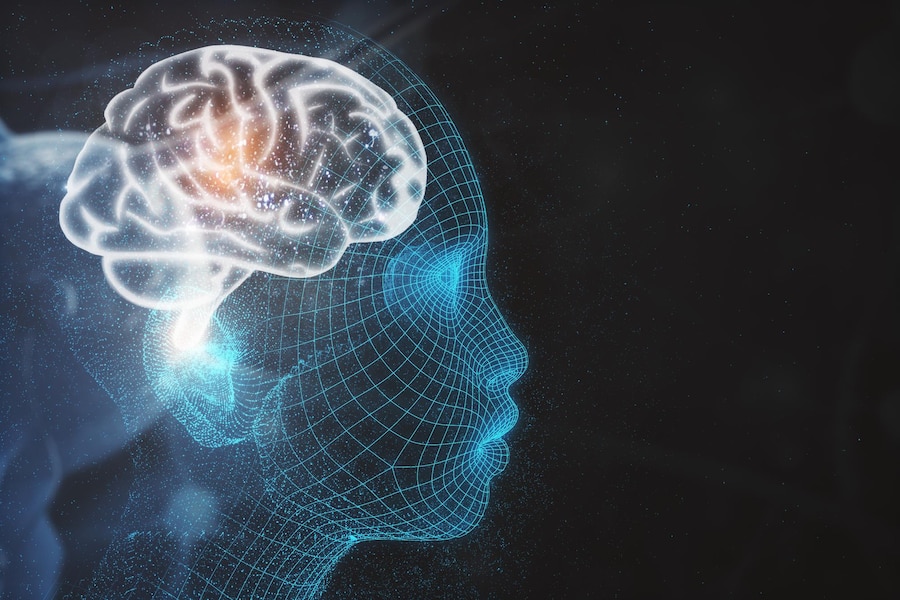
This fusion of sensors, connectivity, and intelligence is not a future concept; it is actively reshaping the global economy today. The applications are as vast as they are impactful.
A. Smart Cities: Urban Environments that Think Our cities are becoming living laboratories for advanced sensor networks.
- Intelligent Traffic Management: Sensors embedded in roads and on traffic lights count vehicles, monitor flow, and feed data to AI platforms that dynamically adjust signal timings to reduce congestion and emissions. Emergency vehicles can be given a “green wave” through intersections, dramatically improving response times.
- Environmental Monitoring: A dense network of chemical sensors provides citizens and officials with real-time, block-by-block data on air and water quality, identifying pollution hotspots and enabling targeted interventions.
- Efficient Public Services: Smart waste bins signal sanitation departments when they are full, optimizing collection routes and saving fuel. Smart streetlights can brighten when they detect pedestrians or vehicles and dim when the streets are empty, saving enormous amounts of electricity.
B. Precision Agriculture: The Data-Driven Farm Farming is undergoing a high-tech transformation to meet the challenge of feeding a growing global population.
- Targeted Resource Application: Instead of watering and fertilizing an entire field uniformly, precision agriculture uses sensors to understand the specific needs of different zones. Soil moisture sensors tell irrigation systems exactly when and how much water to apply, preventing waste. Drones equipped with hyperspectral sensors analyze crop health, allowing for the precise application of fertilizer or pesticides only where needed.
- Livestock Management: Biometric sensors on cattle can monitor health indicators like temperature and activity levels, alerting farmers to the early signs of illness and improving animal welfare.
- Yield Maximization: By combining sensor data with weather forecasts and satellite imagery, AI platforms can provide farmers with powerful insights to optimize planting times, harvesting schedules, and overall farm management, increasing yields while reducing environmental impact.
C. Healthcare: The Internet of Medical Things (IoMT) Sensor networks are revolutionizing healthcare, moving it from a reactive, hospital-centric model to a proactive, personalized, and preventative one.
- Continuous Remote Monitoring: Wearable devices like smartwatches, continuous glucose monitors, and ECG patches track vital signs 24/7 from the comfort of a patient’s home. This data stream allows doctors to monitor chronic conditions remotely, detect dangerous events like atrial fibrillation, and intervene before a crisis occurs.
- Smart Hospitals: Hospital beds equipped with sensors can monitor a patient’s movement to prevent falls and bedsores. “Smart pills” containing tiny ingestible sensors can report on whether a patient has taken their medication. This automates routine tasks, freeing up nurses and doctors to focus on critical patient care.
- Personalized Medicine: By analyzing the vast dataset from an individual’s wearable sensors, AI can identify personal health trends and risk factors, offering customized lifestyle and treatment recommendations.
D. Industry 4.0: The Sentient Factory The industrial world is at the forefront of the sensor revolution, creating smart factories that are more efficient, productive, and safer.
- Predictive Maintenance: This is the killer app of the Industrial IoT (IIoT). Acoustic and vibration sensors are attached to critical machinery, listening for subtle changes in operation that are precursors to failure. ML algorithms can then predict a breakdown weeks in advance, allowing for maintenance to be scheduled before a costly, unplanned shutdown occurs.
- Digital Twins: Companies create a highly detailed, virtual replica of a physical asset or an entire factory, fed with real-time data from a massive sensor network. This “digital twin” can be used to run simulations, test new processes, and optimize performance in the virtual world before implementing changes in the real world.
- Supply Chain Visibility: GPS and environmental sensors attached to shipping containers provide a real-time, end-to-end view of the supply chain, monitoring not just location but also conditions like temperature and humidity, ensuring the quality of sensitive goods like food and pharmaceuticals.
Confronting the Challenges of a Sentient World

The blooming of a planetary nervous system brings with it unprecedented opportunities, but also formidable challenges that must be addressed responsibly.
A. Security and Privacy: When every device is a connected sensor, the potential attack surface for malicious actors expands exponentially. A hacked network of traffic sensors could create city-wide gridlock. A compromised network of medical devices could have life-or-death consequences. Furthermore, the constant collection of data raises profound privacy questions. Who owns the data from the smart meter on your home? How is the location data from your car being used? Without robust security protocols and clear privacy regulations, the trust required for widespread adoption will erode.
B. The Data Deluge: The sheer volume of data being generated by these networks is staggering, measured in zettabytes (trillions of gigabytes). Storing, managing, and, most importantly, extracting meaningful value from this data deluge is a massive technical challenge. It requires new data architectures and more powerful AI tools to avoid drowning in a sea of meaningless information.
C. Ethical Considerations and Bias: The AI that interprets sensor data is only as good as the data it’s trained on. If historical data reflects existing societal biases, the AI will learn and amplify those biases. For example, a facial recognition system trained on a non-diverse dataset may perform poorly for certain demographic groups. We must actively work to ensure fairness, transparency, and accountability in the algorithms that will be making increasingly important decisions in our lives.
Navigating Our Connected Future
We are at the very beginning of this global transformation. The future will bring even more advanced capabilities: sensor fusion, where AI combines data from multiple different types of sensors (e.g., video, audio, and thermal) to create a richer and more accurate understanding of an event; biocompatible sensors that can safely operate inside the human body for extended periods; and energy harvesting technologies that will allow sensors to power themselves from ambient vibrations, light, or heat.
The blooming of advanced sensor networks is creating a world that is more responsive, efficient, and interconnected than ever before. It is the literal infrastructure of the data-driven future, a digital nervous system capable of monitoring the health of our planet, our cities, and ourselves. Forging this sentient world carries an immense responsibility to build it securely, ethically, and for the benefit of all humanity. The quiet revolution is here, and it is changing everything.
